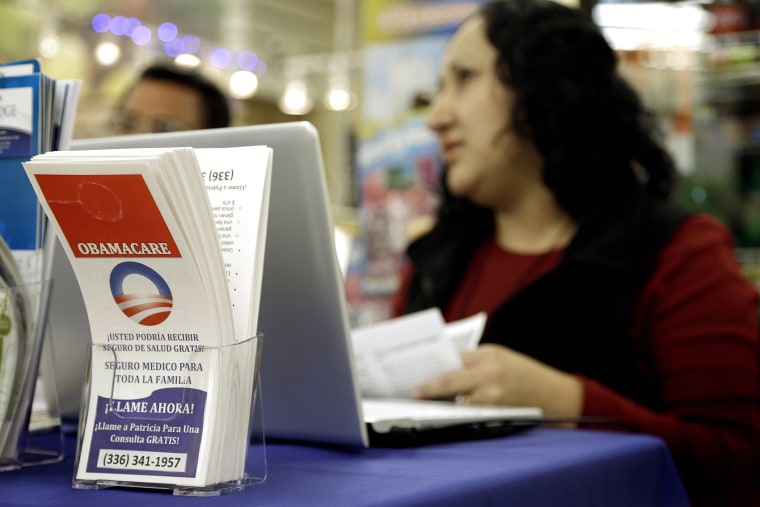More than half of those who've signed up for Obamacare in 2015 are returning consumers who are renewing their coverage for next year, according to early data released by the Department of Health and Human Services (HHS).
In the first two weeks of open enrollment, which began on Nov. 15, 52% of those who've signed up for coverage through Healthcare.gov are returning customers who are renewing their coverage for 2015, HHS said. A total of 765,135 consumers have signed up for coverage between Nov. 15 and 22.
RELATED: Record low growth in health care spending
Administration officials say they're satisfied with the overall numbers. "We’re off to a good start — we’re where we want to be at this point in our implementation," said Healthcare.gov Marketplace CEO Kevin Counihan. "The marketplace is working."
Though it's still early in the open enrollment period, experts say they're surprised at the number of Obamacare consumers who are actively shopping for insurance again. Most aren't required to if they want to keep the same coverage: Nearly everyone enrolled through the 34 federally-run exchanges will be automatically enrolled in the same health plans for 2015, due to a move by the Obama administration over the summer. (That's not the case in all the state exchanges, some of which require current enrollees to sign up again to avoid losing coverage.)
"I continue to be surprised by how many people are re-enrolling. We expected a very small percentage of people who were enrolled in 2014 to re-shop," says Caroline Pearson, vice-president of Avalere Health, a health care consulting and research firm.
It's important for current Obamacare consumers to shop around and compare their options again, because many people's premiums will go up unless they change plans, which could lead to some serious sticker shock in 2015. On average, the plans that were most popular in 2014 will see an average 10% rate increase next year, according to Avalere Health's analysis.
"For the vast majority of people, if they stay in the same plan, they’ll see rate increases for the single digits to the high single digits," said Andy Slavitt, principal deputy administrator for the Center for Medicare and Medicaid Services. However, Slavitt said he didn't know if there was "precise data" available on the proportion of consumers who will see their premiums go up if they simply auto-enroll in the same plan.
RELATED: Obamacare off to a 'solid start' for 2015
If they're willing to shop around and switch plans, however, the majority of people will be able to find a cheaper plan with similar coverage, which Obamacare classifies according to "metal levels" (bronze, silver, etc.). "More than 7 in 10 current Marketplace enrollees can find a lower premium plan in the same metal level — before tax credits — by returning to shop," HHS said in a statement.
Increased competition has helped keep Obamacare premium increases in check, with 25% more insurers participating in the exchanges this year. However, there are some significant differences from state to state: For a 27-year-old, the second-lowest cost silver plan will cost 20% less in Mississippi and 14% less in New Hampshire, on average, but 28% more in Alaska. (This is before tax credits that help subsidize the cost of insurance for 83% of those enrolled through the exchanges in 2014.)
Consumers will have until Feb. 15 to change plans, and officials will be sending notices in the coming weeks to remind them of their options. Larry Levitt, vice-president at the Kaiser Family Foundation, thinks the early data indicates that people are trying make informed choices.
"While it’s still early, the numbers indicate strong interest and that the systems are humming along and working well," Levitt says.
"Importantly, about half of the signups are among returning customers, which suggests that a good number of people are shopping for a better deal rather than simply going on autopilot and renewing their current plans."
